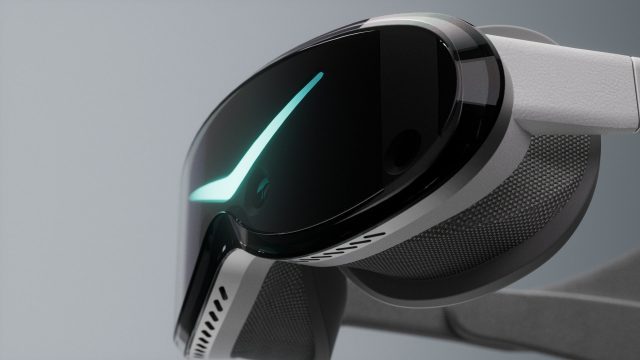The Pimax Dream Air headset marks a daring shift in the company’s design approach. Historically known for their bulky headsets that provide an expansive field of view, Pimax is now venturing into creating a compact headset that doesn’t skimp on features. One particularly intriguing feature is the auto-tightening headstrap, a first for the industry.
With a price tag of $1,900 and anticipated to ship in May 2025, the Pimax Dream Air is set to compete with other emerging high-end PC VR headsets like the Bigscreen Beyond and Shiftall MaganeX Superlight.
True to form, Pimax isn’t holding back on ambitious claims that might divert its focus from timely product delivery. The Dream Air promises a unique feature: an optional compute puck that allows the headset to function standalone. Dubbed ‘Cobb’, this device will feature a Snapdragon XR2 chip and battery, and there’s also an optional SteamVR Tracking faceplate to consider.
In keeping with its somewhat disruptive announcement pattern, this new reveal comes while Pimax still hasn’t delivered previous commitments. The Crystal Super headset, announced back in April 2024 with an original release planned for late 2024, is now slated for early 2025.
As for the Dream Air’s specs, here’s a glimpse of what it promises:
- Weighs 200g
- 13MP resolution per eye (3,840 × 3,552 micro-OLED) at 90Hz with HDR
- 102° field of view
- Inside-out tracking
- Comes with motion controllers and hand-tracking
- Built-in audio
- Optional prescription lenses
- Eye-tracking
- Automatic IPD and strap-tightening
The idea of an auto-tightening strap is particularly groundbreaking. Comfort is crucial in VR, and while many users tend to overly tighten headsets to keep them snug, achieving the right balance of comfort and stability is key. If successful, this feature would be a game-changer for many.
Only renderings of the headset have been seen so far, but the strap’s design seems well-thought-out, with the mechanism hidden beneath the fabric, giving it a sleek appearance that subtly adjusts.
Automatic IPD adjustment, which aligns the lens distance with a user’s eye width, further adds to its appeal. Manually adjusting this can be tricky, so automation here is a welcome touch.
While it remains uncertain if Pimax can deliver such a polished device, their foray into sleeker design marks a significant departure from the utilitarian aesthetics of their past products.

Despite this bold new direction, Pimax isn’t abandoning its traditional boxy styles. The company maintains that it will continue to develop headsets with larger fields of view alongside this newer, more compact model.
Pre-orders for the Dream Air are already underway, with the headset priced at $1,900 and an expected release date in May 2025.













































